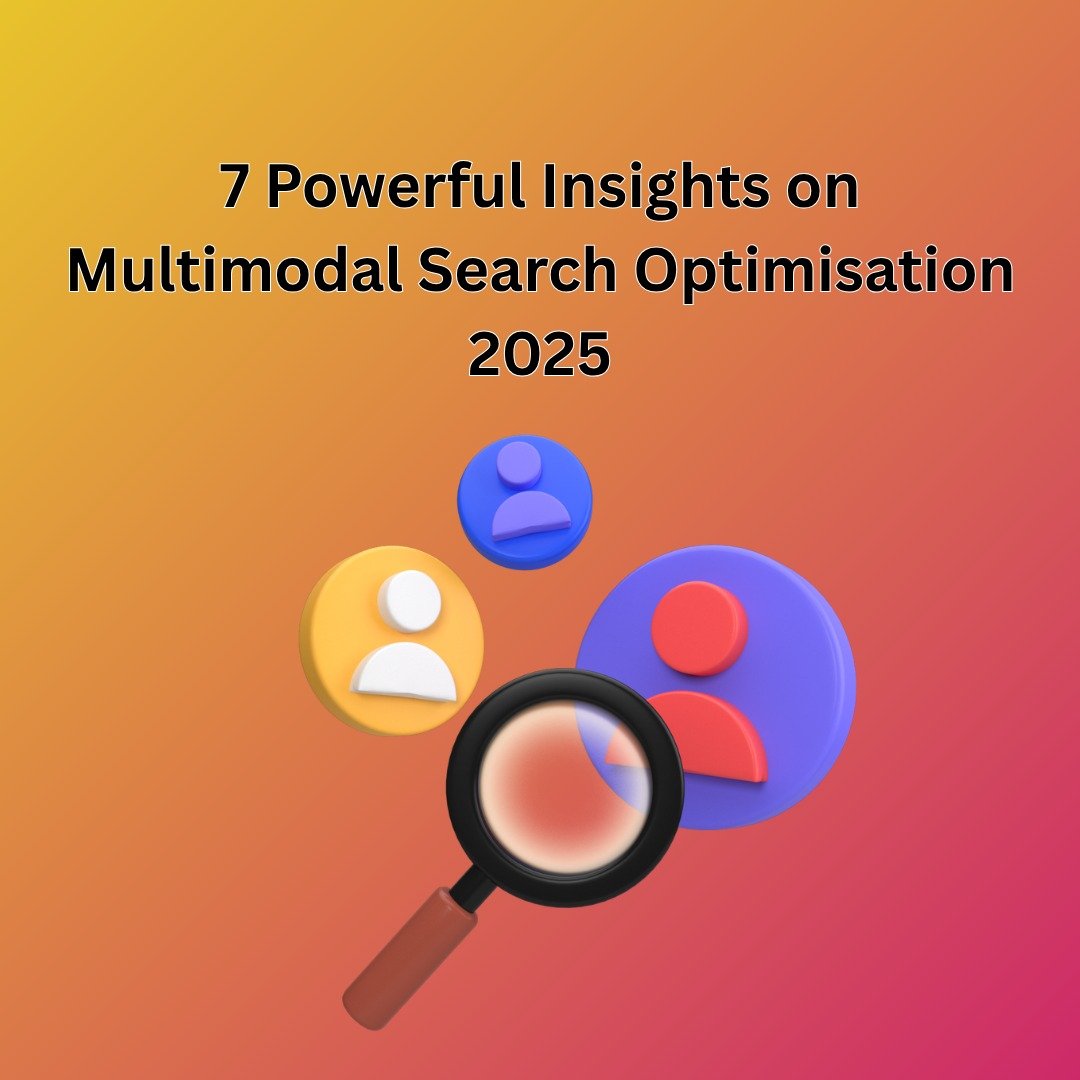Multimodal search optimization is transforming the way users interact with online content. In today’s AI-driven digital landscape, search engines are evolving beyond text. They now understand images, videos, audio, and even gestures to deliver more relevant and personalized results. As we step into 2025, this emerging technology is not just a trend; it is a revolution in how brands appear in search results and engage with audiences across multiple touchpoints.
In this blog, we will explore 7 powerful facts about multimodal search optimization and how it is reshaping SEO, marketing, and user experience in 2025.
1, Multimodal Search Goes Beyond Text-Based SEO
Traditional SEO focuses mainly on optimizing text such as keywords, meta descriptions, and backlinks. Multimodal search optimization expands this approach to include images, voice, and video as core ranking signals.
For example, when users upload a photo to Google Lens or describe an item using voice search, the search engine uses AI models to interpret and match results across multiple data types. This means your image alt texts, video descriptions, and visual consistency now contribute to your search ranking.
In 2025, brands that combine traditional SEO with visual and audio optimisation will lead the search game. It is not just about what users type; it is about how they search.
2, AI and Machine Learning Drive Multimodal Search
Multimodal search relies heavily on artificial intelligence and deep learning algorithms. Search engines now use neural networks that can understand context from mixed inputs such as combining an image with a text query.
For instance, AI can interpret a picture of a pair of shoes and connect it with the text “affordable sneakers” to deliver highly accurate shopping results. This technology is powered by advanced multimodal AI models such as Google’s Gemini and OpenAI’s GPT-5, which can understand relationships between visual and linguistic data.
For digital marketers, this means optimizing content for AI comprehension and not just keyword matching. Structured data, descriptive captions, and AI-friendly metadata are now essential.
3, Visual Search Is Becoming a Major Traffic Source
In 2025, visual search is expected to account for over 30% of all online product searches. Platforms like Pinterest, Amazon, and Google are already leading this shift.
With tools like Google Lens and Bing Visual Search, users can point their camera at a product and instantly get results without typing a single word.
To capture this opportunity, businesses should:
Optimize product images with descriptive file names and alt text.
Use consistent branding across visuals.
Include contextual keywords in captions and metadata.
Visual search is not replacing text search. It is complementing it. Brands that prepare for this hybrid experience will dominate the future of online discovery.
4, Voice and Visual Search Are Converging
The rise of voice assistants like Alexa, Google Assistant, and Siri has already changed how people search. The year 2025 is witnessing the convergence of voice and visual search, creating a unified multimodal experience.
Imagine saying, “Show me nearby restaurants with vegan pasta,” and your phone instantly displays visuals of dishes, locations, and reviews all in one search.
This combination offers marketers a powerful new dimension. Optimizing for voice SEO using conversational queries and featured snippets while aligning it with visual content ensures higher visibility across devices.
The future of search is not just seen or heard. It is both.
5, User Experience (UX) Is Central to Multimodal SEO
Google’s algorithms now prioritize search satisfaction over keyword relevance. In multimodal search, user experience plays a massive role in ranking.
Factors such as:
Fast-loading images and videos
Accessible design for visual and auditory elements
Intuitive content layout for AI understanding
All of these influence visibility in multimodal results.
Marketers must design content that feels human-centered, easy to view, listen to, and interact with. The better the experience, the higher the engagement and the stronger the ranking signals.
6, E-Commerce Brands Are Leading the Transformation
E-commerce platforms have quickly adopted multimodal optimisation. Amazon, for instance, uses AI-powered product recognition to connect user-uploaded photos with exact or similar items.
In India, leading retailers like Myntra and Flipkart are experimenting with AI-based visual searches, allowing users to find outfits by uploading pictures instead of typing descriptions.
For online sellers, this provides a major advantage:
Improved conversion rates through visual discovery
Enhanced product recommendations
Reduced search friction for customers
By 2025, visual and voice search optimization will be just as important as mobile and keyword SEO once were.
7, The Future of SEO Lies in Multimodal Integration
The biggest takeaway is that multimodal search optimization is not replacing SEO. It is expanding.
Text remains crucial, but now it is part of a larger ecosystem where AI understands intent through visuals, sounds, and context.
To stay competitive, brands should:
Combine text, image, and video content in each campaign
Optimize for AI-driven indexing using schema markup
Maintain cross-platform content consistency across Google, YouTube, Pinterest, and Instagram
Track new search metrics such as visual impressions and AI-driven engagement
This approach not only boosts discoverability but also future-proofs your marketing strategy.
Final Thoughts
Multimodal search optimization is revolutionizing the digital marketing landscape in 2025. It bridges the gap between human behavior and machine understanding, delivering smarter, faster, and more relevant results.
Brands that adopt multimodal SEO today will gain a strong competitive edge in tomorrow’s AI-driven search environment. Whether you are a marketer, content creator, or e-commerce brand, optimizing for text, voice, image, and video together is no longer optional. It is essential.
The future of SEO is here, and it speaks every language, sees every image, and understands every intent.


